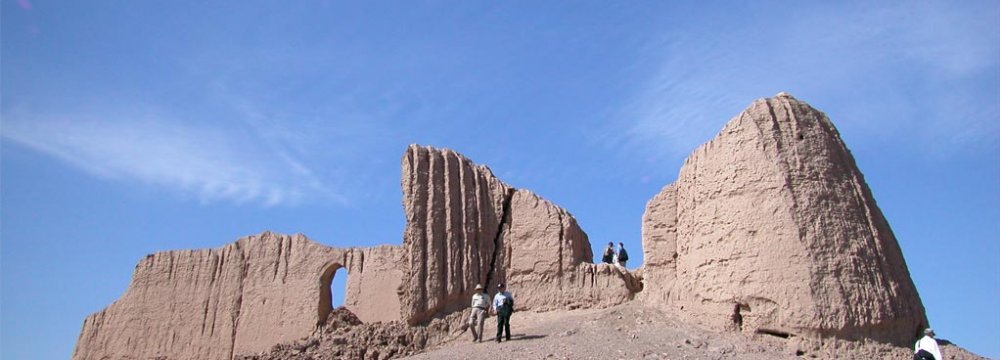A total of $26,000 has been allocated this year for restoration of Qal’eh Dokhtar ‘Maid Fort’ located in Firuzabad, Fars Province, CHTN reported, quoting director general of Provincial Cultural Heritage Organization Mosayeb Amiri.
The restorative operation includes stone-fencing at northeastern foundation, repair of eastern staircase, and thatch-casings.
Significance
Firuzabad Qal’eh Dokhtar was erected by Ardeshir I in the 2nd decade of 3rd century, before he became the 1st king of Sassanid Dynasty in 224. The structure may be assumed to be the first example of ‘chahartaq’ in Iran.
Chahartaq ‘four arches’ is a modern term for an equilateral architectural unit consisting of four arches or short barrel vaults between four corner piers, with a dome on squinches over the central square; this square and the lateral bays under the arches or barrel vaults together constitute a room of cruciform ground plan.
Both the earlier cliff-top fort of Qal’eh Dokhtar and the later nearby Palace of Ardeshir contain domed cubes, each with four axial doors. This type, which is essentially a square room with plain walls, may correctly be called chaharqapu, ‘four doors’, a term that is sometimes applied to chahartaq structures, as well.
Because of its structural and aesthetic properties chahartaq became the most prominent element in traditional Iranian architecture after ‘ayvan’, stated Prof. Dietrich Huff in his article Chartaq published by the Circle of Ancient Iranian Studies.
The term chahartaq seems descriptive of many ruins that can be observed in Iran. Most of these ruins are, however, only the surviving remnants of more complex buildings from which surrounding walls, ambulatories, and subsidiary rooms have disappeared.
As the domed unit with four axial arches has been in continuous use in both religious and secular contexts over a period of more than 1,500 years, the term cannot be considered to define a single functional building type; it must be used only in its literal sense, to identify a specific architectural form.
Origins
The origins of chahartaq are still a matter of debate. It has been suggested that the dome on squinches originated in the mud-brick architecture of eastern Iran, where it may have been developed from the simple pitched-brick dome or squinch vault.
The earliest definite archeological evidence of pitched-brick vaulting, however, comes from Mesopotamia in the late 3rd or early 2nd millennium BC. Although certain types of corbelled vaultings, for instance those found above some tombs at Ur, dating to 1st half of the 3rd millennium BC, may be regarded as forerunners.
In Iran there is no evidence of chahartaq proper earlier than the beginning of the Sassanid Era. The cruciform ground plan appears in rudimentary form in Parthian buildings like Qal’eh Zahhak in Azerbaijan, which were influenced by Roman architectural forms; it was fully developed in structures roofed with pendentive domes circumscribing the square, which were popular in 2nd and early 3rd century Roman Syria, as observed in the western baths at Jerash (Gerasa) and the so called Qasr Nuwayjis at Amman.





